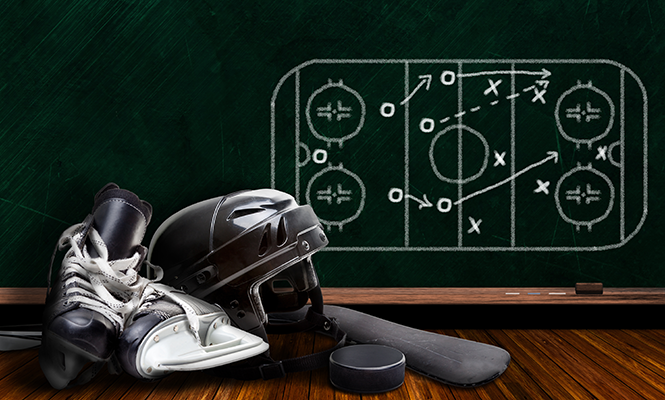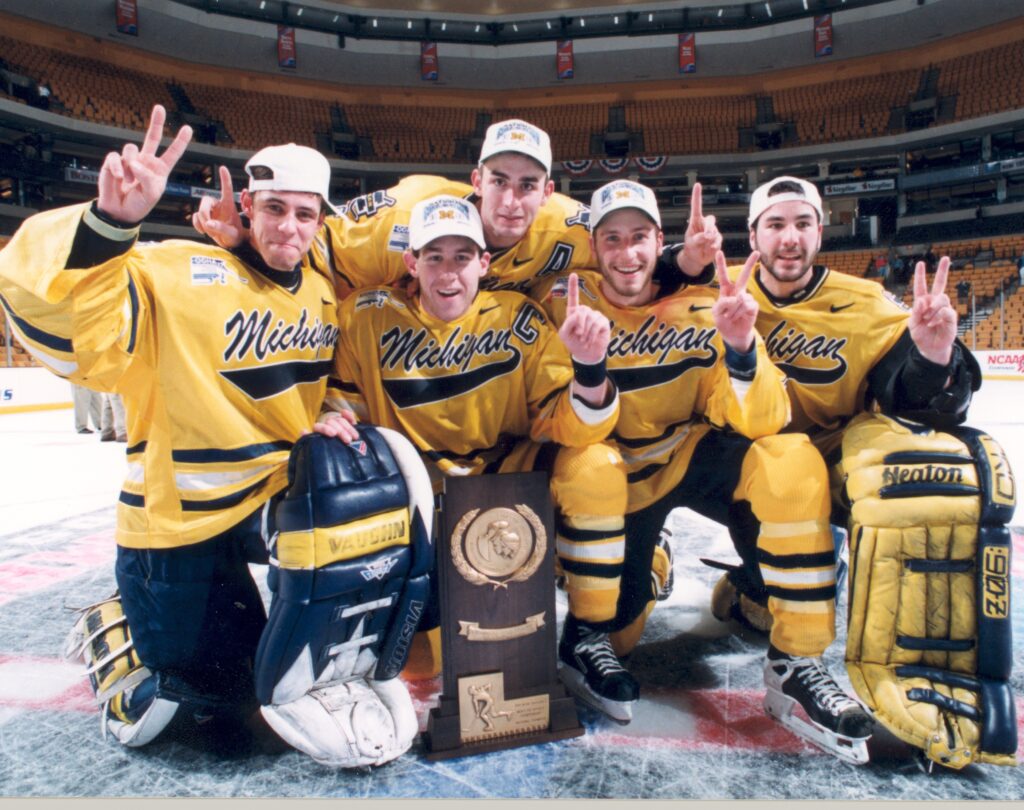Patients frequently ask how I became a neurosurgeon after playing college and professional hockey. At first glance, the fields seem so disparate – how could someone be involved in both? In fact, there are many similarities between team sports and neurosurgery and also many neurosurgeons with a serious athletic background than one might expect. Also, the lessons learned through sports transcend disciplines and are particularly applicable to the demands of our specialty.
I was incredibly fortunate to play hockey for Red Berenson at the University of Michigan. His experience as the first college player to make the National Hockey League (NHL), a multi-year Stanley Cup winner, NHL Coach of the Year and one of the longest tenured and most successful college coaches in history was invaluable to our NCAA Championship teams in 1996 and 1998 (Figure 1).
However, sports-specific knowledge and ability alone are often insufficient to win championships or build programs. Among elite teams of similar skill, something special is necessary for buy-in and to elevate one team over the rest. Coach Berenson focused every day on values like accountability, commitment, hard work, grit and integrity – all of which I applied directly to my neurosurgical practice. Interestingly, when he spoke about these things, it was usually related to life outside of hockey. He cared most about what we would contribute to the world when our time as athletes ended and understood his lessons applied to the pursuit of excellence in any field.
This philosophy, and having led by example by earning his MBA during his years playing professionally, attracted players driven to excel as true student-athletes. From our championship teams there are two neurosurgeons, two orthopedic surgeons, a general surgeon and an emergency medicine physician, not to mention a Navy Seal, multiple lawyers, business executives and others with advanced degrees. Without exaggeration, every one of my teammates has been successful in and out of sports. For a program that has long been one of the top producers of professional hockey players and has won more national championships than any other school, this level of off-ice success is tangible evidence that elite performance in one field is not a limitation, but an opportunity.
While our field is clearly not a sport, for most of us, neurosurgery is more than what we do – it is a passion and a significant part of our core being. Hard work, preparation, constant practice, setting goals, execution of challenging physical and mental tasks under pressure as well as the evaluation and evolution of technique over time are skills required both for successful surgeons and athletes. My first neurosurgical mentor, Julian Hoff, MD, taught me that neurosurgical values closely align with what I knew from hockey. To name a few:
- Teamwork allows us to take better care of patients;
- Collegiality and respect – synonyms for sportsmanship – build reputations and departments; and
- Being part of something bigger than the self is one of life’s greatest rewards.
Over the years I’ve spoken with many other neurosurgeons who were involved in high level sports, all of whom agree that being an athlete directly prepared them for the rigors of medical education, neurosurgery residency and daily practice. Even practical matters, like juggling a professional schedule and maintaining a sense of personal balance, that at times present real challenges become easier having experienced dedicating the equivalent of a full-time job to practice and competition, while pursuing a college education. On a more abstract level, this type of diversity of experience is common among neurosurgeons. Whether through sports or other demanding pursuits, the sharing of ideas and expertise across multiple fields helps push neurosurgery forward to continue developing creative solutions for complex problems.
Figure 1. Dr. Fox, 2nd from right, with his fellow seniors after winning the NCAA Men’s Ice Hockey National Championship in 1998. Photo shared with permission from the University of Michigan Athletic Department. Photo credit: Michigan Photography.
[aans_authors]









